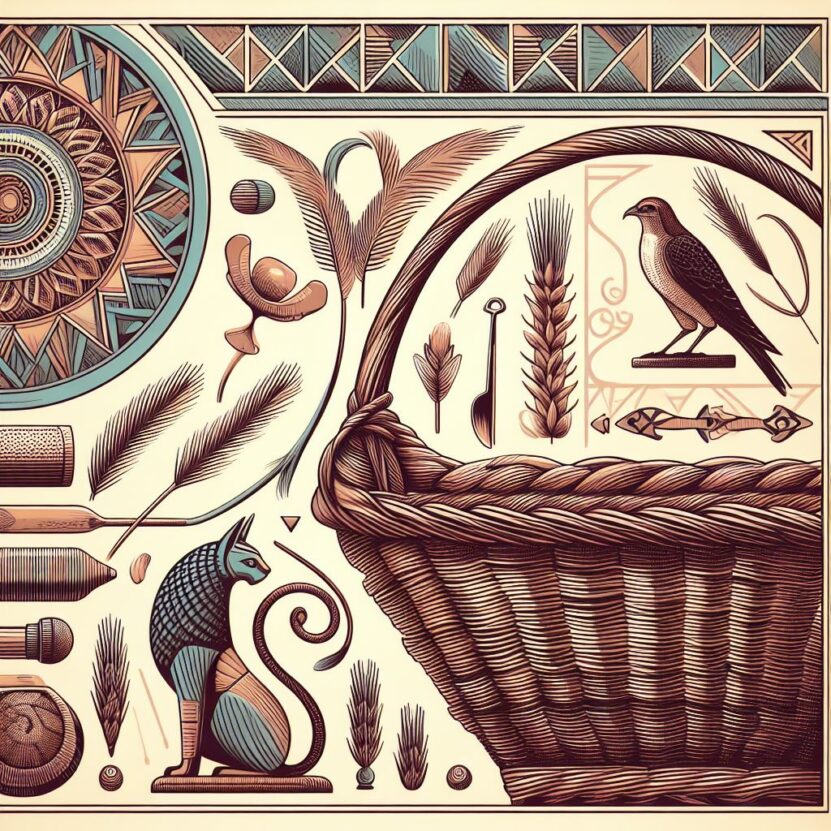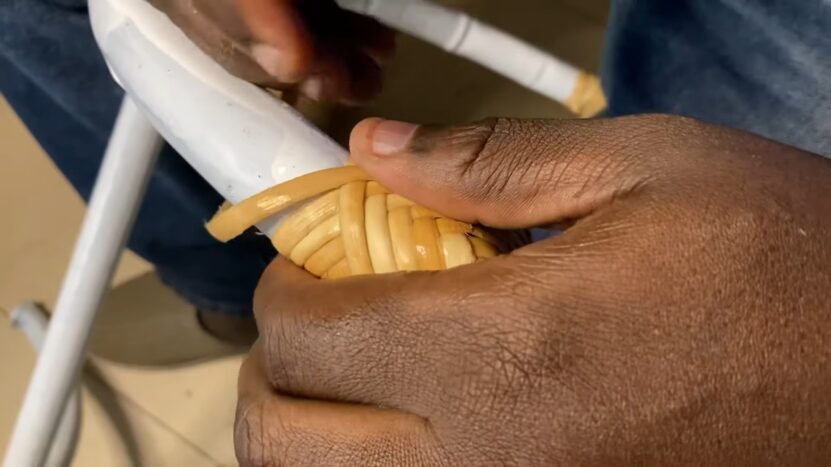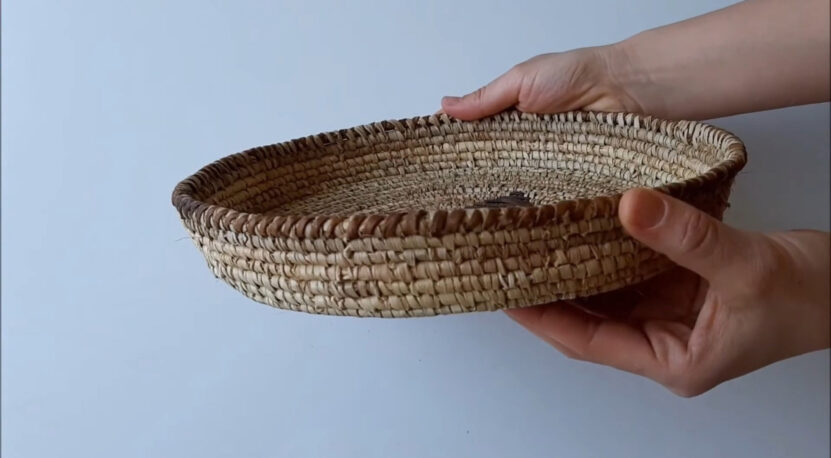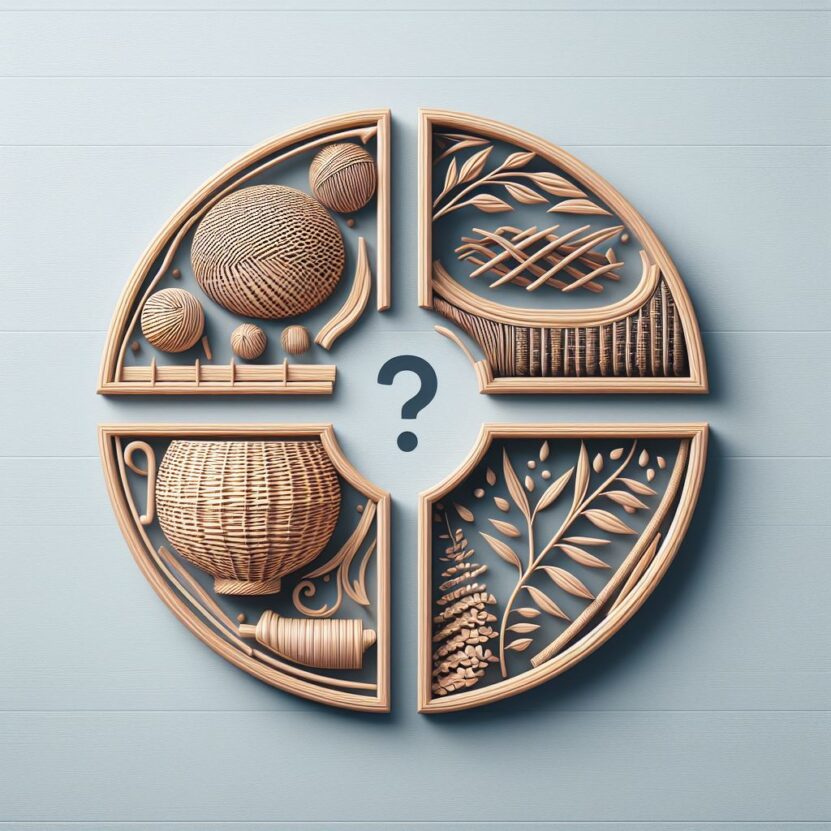The terms “rattan” or “wicker” often are mistakenly used interchangeably to describe the popular indoor/outdoor furniture that graces patios and summer homes. But rattan is a material used to make the furniture, while wicker is the technique that involves weaving natural materials such as bamboo and willow, often into intricate patterns–a process that has been used as far back as ancient Egypt.
Ancient roots

Wicker–a weaving process that uses bamboo, reeds, rushes, or willow–is an ancient technique. Wicker baskets and stools have been found in ancient Egypt and among the ash-covered ruins of Pompeii.
These days, the same weaving techniques are being used with recycled materials to create eco-friendly furniture and home furnishings.
Jungle vine
Rattan is produced from a jungle vine found extensively in Southeast Asia. The strong, solid cane with its vertical grain is harvested, cut into lengths, and often steamed to shape into curves.
The cane is used to make sturdy indoor/outdoor furniture popular in tropical climates, while rattan peel, the “skin” of the vine, is stripped and soaked to make the thin, pliable strips that bind the rattan poles together when the peel dry.
Durability and Versatility

Rattan is very strong and comes in a variety of natural colors, but the cane can be painted–Victorians like to paint the rattan to resemble bamboo canes, so-called “faux bamboo” painting on bamboo’s distinctive rings.
Antique canes
Old rattan and wicker furniture can command high prices in antique sales–notably Victorian wicker and vintage rattan pieces made in the Philippines or the Hawaiian Islands and dating from the 1940s and 1950s. The rattan pieces often have colorful bark-cloth cushions with tropical designs.
What Is Wicker?

Wicker refers to products made from woven vines or stems, with the term believed to originate from Scandinavian words meaning “to bend” and “willow”. The primary material for wicker in the past 150 years has been rattan, a climbing palm found in rain forests of Asia, Africa, and the Americas.
The best quality is Southeast Asia’s honey rattan. Properly woven rattan furniture can last a century, evidenced by Victorian-era wicker antiques still in use. Ancient Egyptian artifacts also include wicker furniture.
Rattan’s durability is due to its composition: while bendable, it doesn’t splinter or break like wood. The entire process of transforming rattan from vine to furniture is intricate and mostly manual.
Rattan originates from a tropical palm, growing upwards and then sprawling like a vine. Harvested after a few years, it’s dried and is among the strongest woods due to its vertical grain.
Steaming straightens rattan, and once dried, retains its shape. Rattan frames often form the basis of wicker furniture. While rattan is a specific material, wicker is the weaving process using rattan or other materials.
Some might term it “cane furniture”. Unlike bamboo, which is hollow and prone to cracking, rattan’s solid nature makes it ideal for sturdy, lightweight wicker furniture.
What is Rattan?
The oldest discovered wicker artifact dates back to 1400 B.C. in Egypt. Rattan, a member of the palm family, has been utilized for various purposes, from fishing tools to house construction and furniture, for centuries. Its popularity surged in the late 1800s due to increased availability.
Rattan has a slender stem, similar to a vine, but with a solid inner core, unlike hollow bamboo. It grows towards light by climbing trees in dense rainforests.
Rattan grows continuously, without a specific harvesting season, and can be as long as 600 feet. Harvesting is challenging due to jungle terrains.
After cutting into manageable lengths and removing the outer layer by hand, the stems are dried, and then processed into wicker for weaving or used as frame construction.
Why does The Wood Works Inc. get involved with woven rattan wicker-style furniture?
- First, because The Wood Works Inc. folks think of us as the place to have wood furniture repaired and restored.
- Second, because the core or structure of wicker-style furniture is often low-grade wood “dowels” that fault and break; we have found ways to repair them.
- Third, because we have for years been experts at chair and rocker press and hand-woven cane, rush rope, and split reed seating; and, wicker rattan is a close cousin.
- Fourth, because the owner of such family keepsake items does not understand the true definitions and commonly interchange the use of the terms: wicker, rattan, and caning.
So, we find ourselves as unique in all of Greater Kansas City as craftspeople who will entertain working on restoring such items. And, more interestingly, we have not found real experts on the subject anywhere after exhausting internet searches.
Are we the experts? Not necessarily, but we have successfully repaired restored, and refinished many such items. As with everything we do, we are constantly learning.
The biggest limiter is the age of materials originally used in that most have become extremely brittle, and the cost of repairs that usually must be quoted as within a price range due to the unexpected.
FAQ
Is rattan furniture environmentally friendly?
Rattan is a sustainable material because it grows rapidly and is renewable. Harvesting rattan also has a lower environmental impact compared to logging other woods.
How should I care for my rattan and wicker furniture?
To maintain its longevity, it’s recommended to keep rattan and wicker furniture away from direct sunlight and moisture. Regular dusting and occasional gentle cleaning with a damp cloth can help maintain its appearance.
Can rattan and wicker furniture be used outdoors?
While they are popular choices for patios and summer homes, prolonged exposure to the elements can damage these materials. It’s best to use them in covered areas and bring them indoors during inclement weather.
Is there a difference in quality between rattan sourced from different regions?
The highest quality rattan is believed to be the honey rattan of Southeast Asia, but the quality can vary based on the specific region and harvesting practices.
How does rattan compare to bamboo in terms of durability?
Rattan is solid and is considered one of the strongest woods available, making it more durable than hollow bamboo, which can crack when bent.
Final Words
Rattan and wicker, with their rich histories and versatile applications, have been cherished for centuries. Their unique characteristics, combined with sustainable harvesting, make them a preferred choice for eco-conscious consumers.
Whether it’s the intricate weaving techniques of wicker or the durable nature of rattan, these materials have proven their timeless appeal. As with any cherished possession, understanding their origins and proper care ensures they remain a lasting part of our homes and lives.
